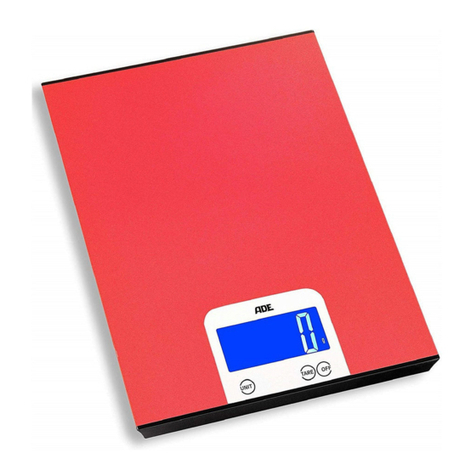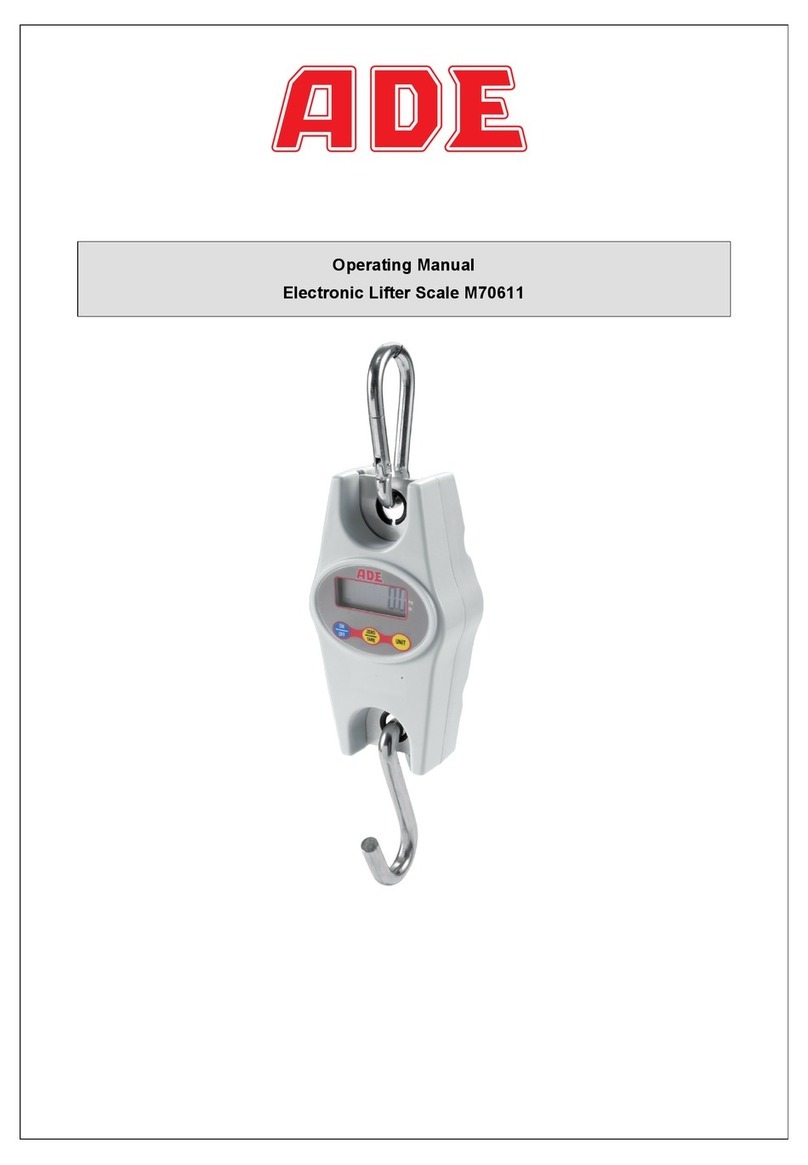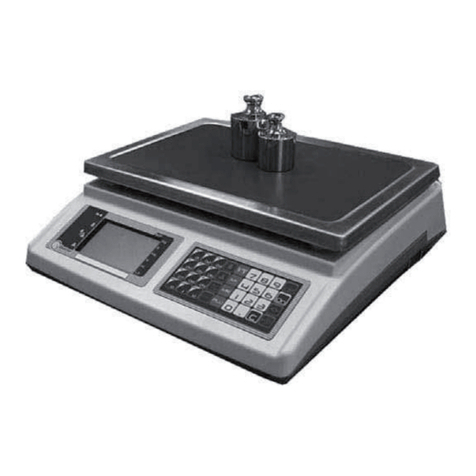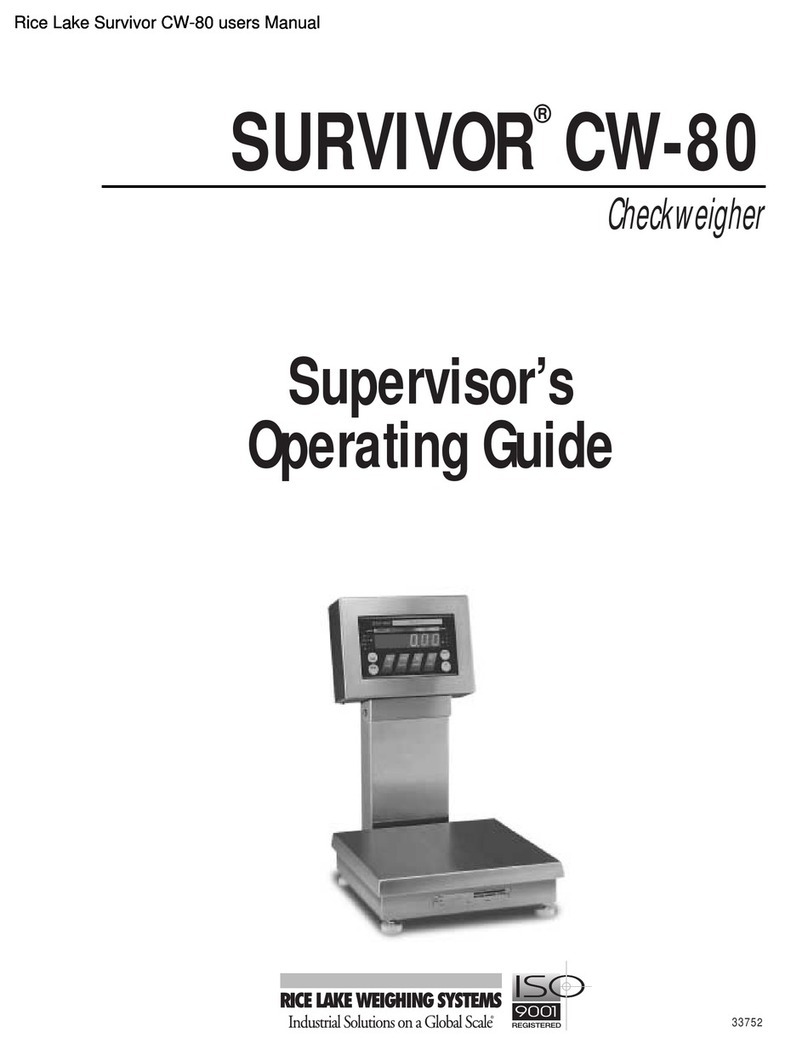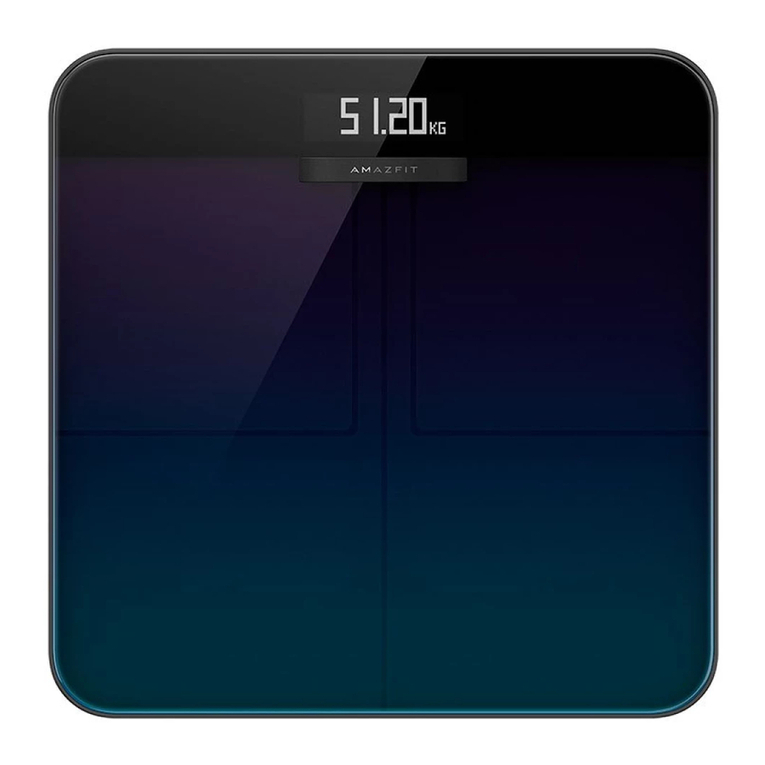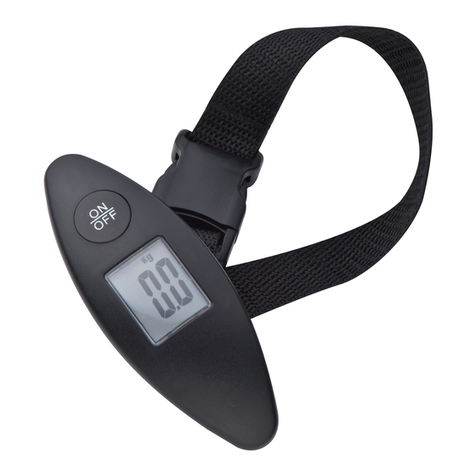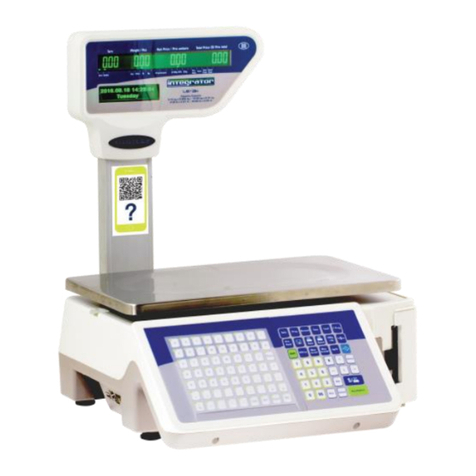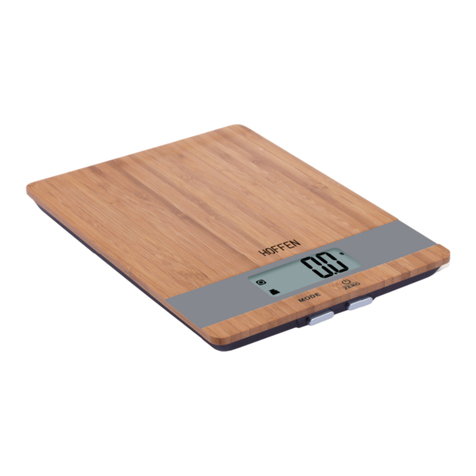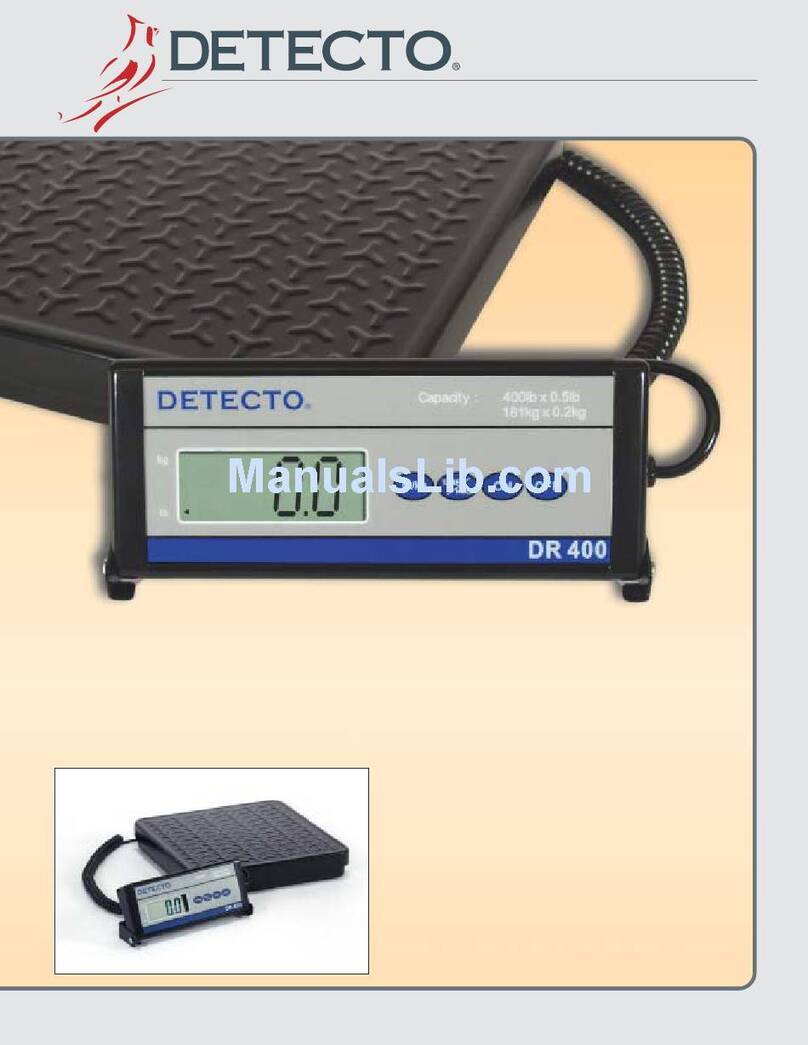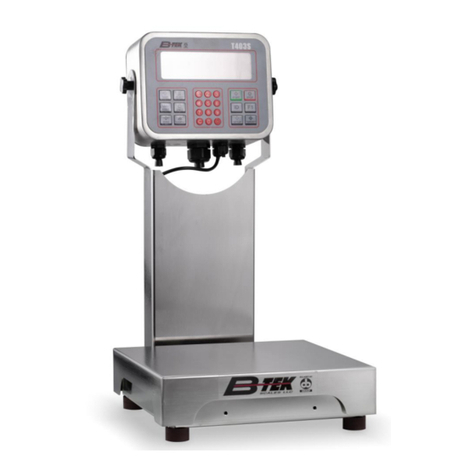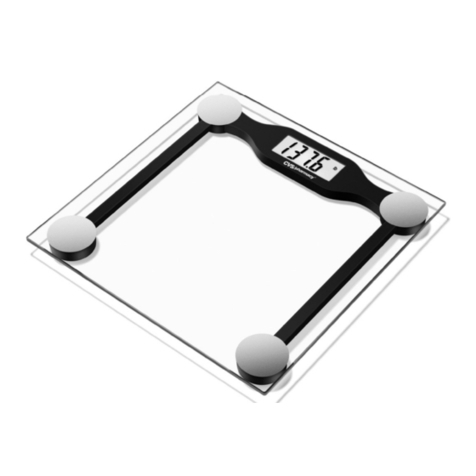Dini Argeo MCW Guide

Crane scales safety and maintenance manual
EN / DE / FR / IT
MCW
www.diniargeo.com


ENGLISH ....................................................................2
DEUTSCH.................................................................18
FRANCAIS................................................................34
ITALIANO .................................................................50

2
ENGLISH
GENERAL SAFETY NORMS.................................................................... 3
Laws and national norms .......................................................................... 3
General warnings ...................................................................................... 3
Organisational measures of the user company......................................... 6
Indications and warnings regarding the crane scale................................. 7
Indications and bans for working in safe conditions.................................. 9
Environmental conditions ........................................................................ 10
MAINTENANCE AND CHECKS.............................................................. 11
Daily monitoring....................................................................................... 11
Regular Maintenance .............................................................................. 12
Maintenance registry............................................................................... 15

3
IMPORTANT NOTICE: before using this crane scale, you must read the following safety
instructions and the user manual. Copy of the user manual is freely available for
download at http://www.diniargeo.com.
GENERAL SAFETY NORMS
The user must respect the manufacturer’s recommendations for the crane scale; one must
respect the instructions requested by the manufacturer of the lifting device, and those
highlighted in the safety data sheet of the product which must be weighed.
Laws and national norms
Before putting into service and while using it, the user must verify that all norms in force in the
Country where the instrument is used in regards to “safety and prevention of casualties” and
“metrology” are respected.
It is also important to take into account and respect the laws and guidelines for the safety
controls of the Country of use.
Carefully respect all the safety measures and maintenance
General warnings
The electronic crane scale is to be considered a scale, and
therefore use must be limited only to weighing needs. The
crane scale is not designed for cargo handling and
transportation. Once the load harnessing operation is done,
move away, and make sure that the load is well balanced lifting
it up only a few centimetres from the ground and then lift the
load down to the ground again. Remove the crane scale at the
end of the weighing operations.
Do not stand or pass under a suspended load

4
DO NOT exceed the nominal capacity of the crane scale.
(The illustration refers to the model 6t. Refer to the maximum
capacity of the purchased instrument).
The nominal capacity of the electronic crane scale must not be
lower than the maximum capacity of the lifting device.
DO NOT exceed the nominal capacity of any support element of
the load if lower than the capacity of the crane scale.
Use the scale EXCLUSIVELY for the lifting and the weighing of
suspended loads and for TENSION measurements.
Suspended loads which may cause applied torsion stresses
MUST be hung with flexible or swivelling bindings.
Carefully respect all the safety measurements established by
the manufacturer of the electronic crane scale, which are shown
in the instruction manual.

5
Entrust the installation, set-up, maintenance, operations only to
trained personnel. Entrust the execution of maintenance
operations only to trained personnel in security controls for
lifting devices.
DO NOT spill liquid on the instrument. Respect the IP degree
protection of the instrument.
DO NOT use solvents or industrial chemicals for cleaning the
instrument.
The crane scale is to be considered like a scale, and therefore it must be used only for
weighing needs. The crane scale is not designed for cargo handling and transportation.
Once the load harnessing operation is done, move away and make sure that the load is well
balanced lifting it up only a few centimetres from the ground and then lift the load down to the
ground again. Remove the crane scale at the end of the weighing operation. An improper or
different use than what is foreseen in this manual, will release the Manufacturer from all
responsibilities in case of damages caused to people or things.

6
Organisational measures of the user company
-Respect the safety measures established by the manufacturer of the electronic crane scale,
the manufacturer of the lifting device, and eventually of the safety board of the product to be
weighed.
-The electronic crane scale must be used only for the foreseen purposes.
-Entrust the use of the instrument only to expert and trained people, also with experience in
using the lifting equipment.
-Entrust the execution of installation, putting into function, maintenance, and repair operations
only to specialised personnel
-Make sure that the user manual is always available where the scale is used.
-The nominal capacity of the scale must be equal or greater than the crane. If the nominal
capacity of the scale is greater than the maximum capacity of the crane, make sure that
loads, which are greater than the maximum capacity of the crane or of any support element
of the load, are lifted.
-Use only original spare parts.
-Do not remove or replace shackles and hooks supplied.
-All the indicator connections must be made respecting the norms applied in the installation
zone and environment.
-Periodic verification with registry.
-The electronic crane scale must be submitted to regular maintenance and repair
interventions
-File the test result and conserve it in the test register.
-When one notices anomalies while using the electronic crane scale, IMMEDIATELY stop all
operations and do not reuse the instrument until the instrument has been submitted to
specific controls by specialised and authorised personnel.
Incorrect use, but reasonably foreseeable, by untrained people entails a non acceptable residual risk.

7
Indications and warnings regarding the crane scale
It is strictly FORBIDDEN for non authorised personnel to
enter in the operating zone.
It is strictly FORBIDDEN to use the crane scale with
other shackles and hooks than those supplied.
Monitor the lifting of the load. During lifting, pay attention
to the movement of the load. The crane scale is not
designed for cargo handling and transportation.
Lift the load without causing knocks using a low speed
of the crane.
Use structures with single hitch elements which allow a
correct alignment of the scale.
Do not use structures with single hitch large-sized
elements which could block the correct alignment near
the hitch point.

8
It is FORBIDDEN to make oblique moves and rotations
on the load.
Any maintenance, repair, or cleaning operations must
be made with the electronic crane scale turned off.
Use the PPE prescribed by the manufacturer of the
lifting system and eventually those highlighted in the
safety data sheet of the weighing article (helmet,
accident-prevention shoes, etc.).
The nominal capacity of the electronic crane scale must not be lower than the maximum capacity of
the lifting device.
DANGER !!

9
Indications and bans for working in safe conditions
It is FORBIDDEN pull or drag loads, apply only vertical stress
DO NOT swing the load by pushing it or putting it beyond the
work area of the lifting device.
DO NOT use multiple attachment points.
It is FORBIDDEN to make any changes to the scale.

10
Environmental conditions
DO NOT install in an area with risk of explosion.
DO NOT expose the instrument to direct sunlight or near
sources of heat
DO NOT expose the instrument to strong magnetic or
electrical fields.
It is FORBIDDEN to use the device for weighing
radioactive materials or melted masses
DO NOT install the instrument in an environment at risk
of corrosion.
It is FORBIDDEN to use the device beyond the
temperature range from -10 ° C to +40 ° C.

11
MAINTENANCE AND CHECKS
The electronic crane scale and all lifting accessories must be regularly subjected to inspection
and maintenance.
For the prevention of accidents or damages, it is necessary that the maintenance is done
according to the manufacturer's instructions. Maintenance must be performed only by persons
who have acquired the necessary technical expertise.
To ensure a safe operation, follow these instructions:
-carry out a continuous regular maintenance and cleaning.
-entrust the maintenance and repair operations only to trained and authorized personnel
-use only original spare parts.
-do not use the electronic crane scale where there is non-compliance with the safety
checklist.
-any maintenance, repair or cleaning should be done away from danger areas and with the
electronic crane scale turned off.
Daily monitoring
Each time the operator starts a new work cycle with the electronic crane scale, one must:
-check all instrument parts;
-carry out a general visual inspection of the whole system;
-Check the integrity and efficiency of all parts of the weighing system like the safety lever of
the hooks, the locking nuts screwed well with the pin, the shackles, etc..

12
Regular Maintenance
Maintenance should be carried out only by persons who have acquired the necessary
technical expertise and are specialized and trained for this purpose.
Every 3 months
-Check all dimensions of the parts which make up the
instrument;
-Check the wear on the handle or the eyelet, by
checking if there are any plastic deformations,
mechanical damages(irregular), cracks, corrosion,
damage to threaded portions and the twists;
-Check the tightness of the splice plate on the hook,
and the presence of defects, and ensure its proper
functioning;
-Make sure that the split pin and the shackle nuts are
firm;
-If other metrological and mechanical irregularities
are detected, have the electronic crane scale
repaired by qualified personnel (authorized
assistance service).
An incorrect measurement of weight may be a sign
of a mechanical problem with the crane scale. If the
crane scale weighs incorrectly, the crane scale must
be repaired by skilled personnel (Authorized Service
Center).
Do not for any reason carry out the repair by
yourself.
In case of non-compliance turn immediately off the
electronic crane scale.
All repair operations and the parts used are
classified and stored in the maintenance register.
Every 12 months
All of the elements that transmit the load, including the
load cell, should be checked by specialised personnel
qualified in inspection and maintenance of cranes and
bridge cranes.
It is of utmost importance that all the maintenance and repair operations, and the used
components are recorded and filed in the appropriate product maintenance registry.

13
For further information on regular checks, see the following table
which refers to the standard UNI EN 13889:
COMPONENT
PART
CONTROL
LIMIT
Shackle
Locking bolts
Loosening
No slack allowed
Pin
Deformation
Dmax –5%
Shackle
surface
Wear
Deformation
No sign or
deformation allowed
Cotter pin
Positioning
Mandatory
Shape of the
shackle
Elongation
Bmax +5%
Section
Diameter
Smax -5%
Hook
Surfaces of
hook and eye
Mechanical
damage
No mechanical
damage allowed
Hook and
eye
Wear and tear
Corrosion
Dmax +5%
Emax -10%
Hmax -10%
eyelet
Eyelet
orientation
It can not be twist
Opening the
hook
Deformation
Cmax +10%
Hook
Twist
Torsion > 10°
Slip on safety
Damage
No damage allowed
Apparatus
Locking
screws
Loosening
Load Cell
Structure
X-Ray
inspection
(Radiography)
No defects in the
material allowed
Surface
Mechanical
Damage
No mechanical
damage allowed
Dimensions
Elongation
Deformation
No elongation
No deformation

14
Frequency of tests
Control
Daily
Weekly
Quarterly
Yearly
Verify the presence of all components of the system
○
General visual inspection of the entire system
○
Control safety lever hook
○
Check cotter pin shackle
○
Cleaning and lubrification
○
Marking the presence of the instrument
○
Control of all the dimensions of the parts that make
up the system
●
Checking the wear of hooks, shackles and bells
●
Checking of the Load Cell
●
○User ●Specialized personnel
Form and structure of the shackle:
The shackles should be examined regularly by a qualified person. The time interval from one
check to another depends on how much the instrument is used, but it is recommended to not
exceed six months.
Therefore, one must:
-always inspect the shackle before use;
-carry out regular visual inspections to look for nicks, cracks, wear or damaged areas,
damaged threads on the pivot and body; if it is necessary, carry out a magnetic test or non-
destructive testing;
-keep a file in regards to the accessory sheet and keep track of the checks;
-the shackles which do not fully or partially satisfy the requirements, must be discarded.

15
Maintenance registry
In order to cope with problems like the wear of the mechanic and electronic components, and
the grip load devices, it is necessary that one carries out a regular and systematic
maintenance.
The maintenance and respective time intervals must take place according to the indications of
the manufacturer shown in the instructions manual of the instrument.
The maintenance interventions must be made only by specialised and qualified personnel.
The maintenance person must have attended training courses and must know the safety
norms in the use of crane scales and concretely apply them.
In this booklet the user must document in chronological order all the maintenance interventions
carried out on the crane scale (inspection/control, revision, repair), as well as any fact or
particular event which might have influenced safety matters.
Upon receipt of the crane scale, or at least before the commissioning of the instrument, record
all dimensions of the hooks and shackles in the service manual. All subsequent dimensional
checks specified in the plan check and maintenance, will be compared with the first
measurements and the tolerance limits given in the above table, refer to the actual size
detected in the first inspection.
In the following pages of this booklet there is a “maintenance registry” in which all ordinary and
extraordinary maintenance interventions on your instrument, should be reported.
All information is very important and can invalidate the validity of the warranty in the case that
it’s not reported in detail and accurately. It is also advisable to make sure that:
- the internal responsible person carries out the quarterly verification and regularly records it on
this booklet;
- the authorised personnel stamps the appropriate box at the end of each annual maintenance
intervention.

Maximum tolerance allowed /
Verication criteria
Reference measurement, to perform
before putting into service
Regular checks
Date
Signature
Date
Signature
Date
Signature
Date
Signature
Date
Signature
Date
Signature
Date
Signature
Date
Signature
3 months
6 months
9 months
12 months
15 months
18 months
21 months
24 months
Upper cricket
B (mm) +/- 5%
D (mm) +/- 5%
S (mm) +/- 5%
Usury Must be
absent
Nut and
cotter Present xed
strong
Lower cricket
B (mm) +/- 5%
D (mm) +/- 5%
S (mm) +/- 5%
Usury Must be
absent
Nut and
cotter Present xed
strong
Hook
C (mm) +/- 10%
D (mm) +/- 5%
E (mm) +/- 10%
H (mm) +/- 10%
Usury Must be
absent
Safety
lever
Present and
in good
condition
Serial number:
Capacity:
Date of the rst checking (*):
Controller: Signature:

Regular checks
Date
Signature
Date
Signature
Date
Signature
Date
Signature
Date
Signature
Date
Signature
Date
Signature
Date
Signature
Date
Signature
Date
Signature
Date
Signature
Date
Signature
27 months
30 months
33 months
36 months
39 months
42 months
45 months
48 months
51 months
54 months
57 months
60 months

18
DEUTSCH
GENERELLE SICHERHEITSVORSCHRIFTEN..................................... 19
Nationale Gesetze und Normen.............................................................. 19
Generelle Hinweise ................................................................................. 19
Organisatorische Maßnahmen des Unternehmens ................................ 22
Mit der Kranwaage zusammenhängende Hinweise und Verbote........... 23
Hinweise und Verbote, um unter sicheren Bedingungen zu arbeiten..... 25
Umweltbedingungen................................................................................ 26
WARTUNG UND ÜBERPRÜFUNG ........................................................ 27
Tägliche Kontrolle.................................................................................... 27
Regelmäßige Wartung ............................................................................ 28
WARTUNGSREGISTRIERUNG ............................................................. 31
Table of contents
Languages:
Other Dini Argeo Scale manuals

Dini Argeo
Dini Argeo HLD Series User manual
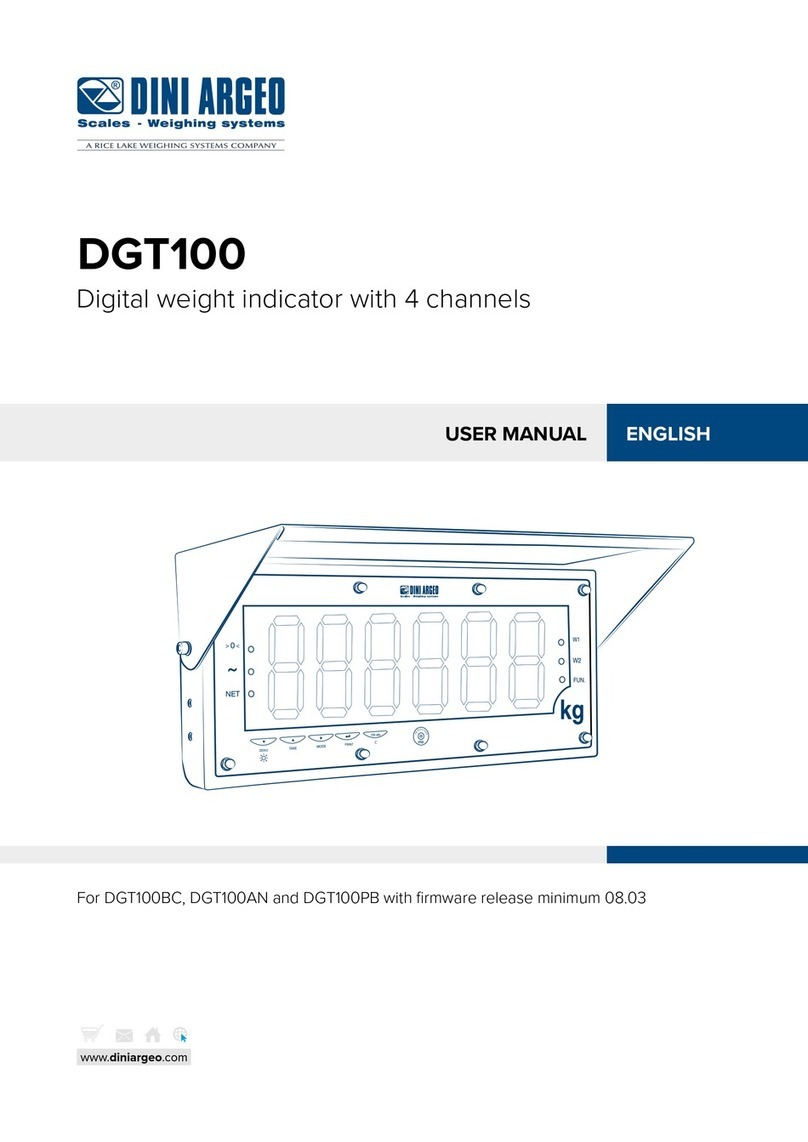
Dini Argeo
Dini Argeo DGT100 User manual
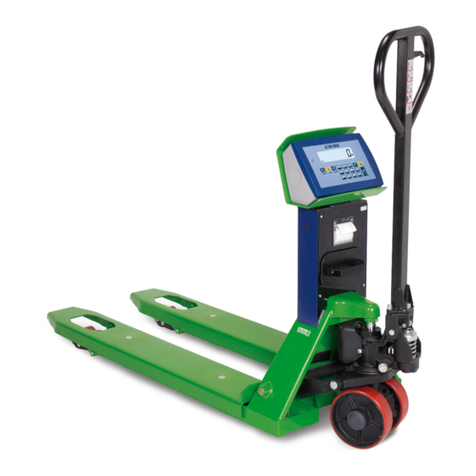
Dini Argeo
Dini Argeo TPW Series Operating instructions
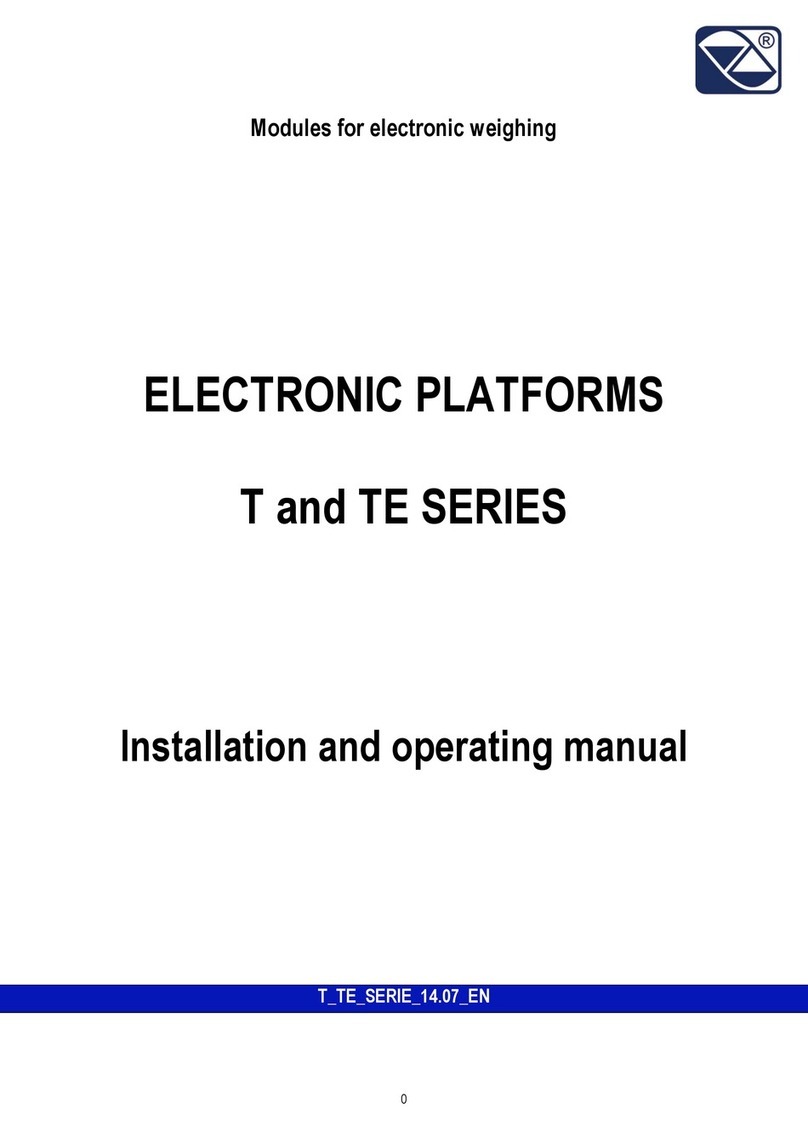
Dini Argeo
Dini Argeo T Series User manual
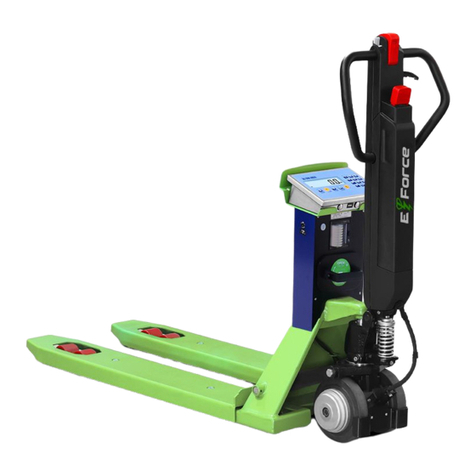
Dini Argeo
Dini Argeo TPW E-FORCE Instruction Manual
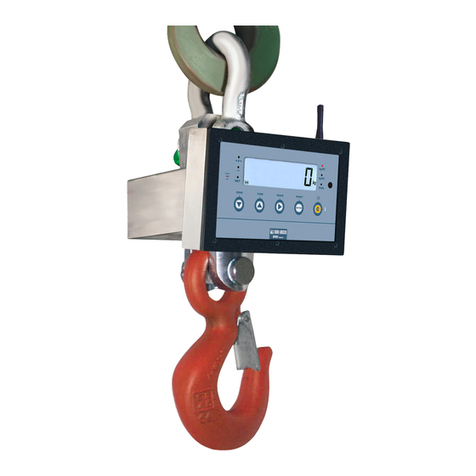
Dini Argeo
Dini Argeo MCW PROFESSIONAL User manual
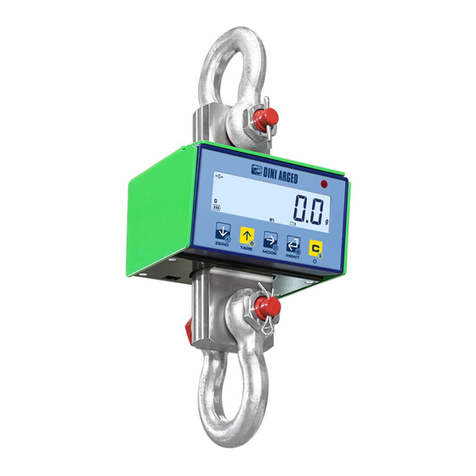
Dini Argeo
Dini Argeo MCWN Series Operating instructions
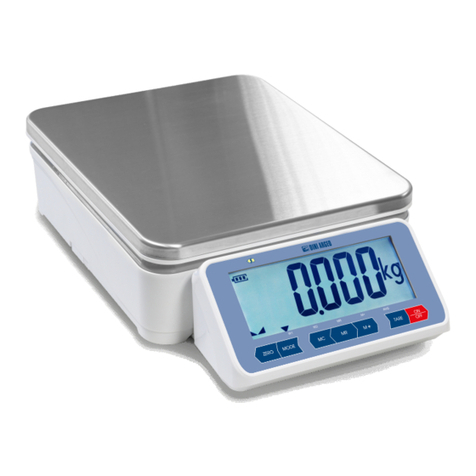
Dini Argeo
Dini Argeo APM User manual
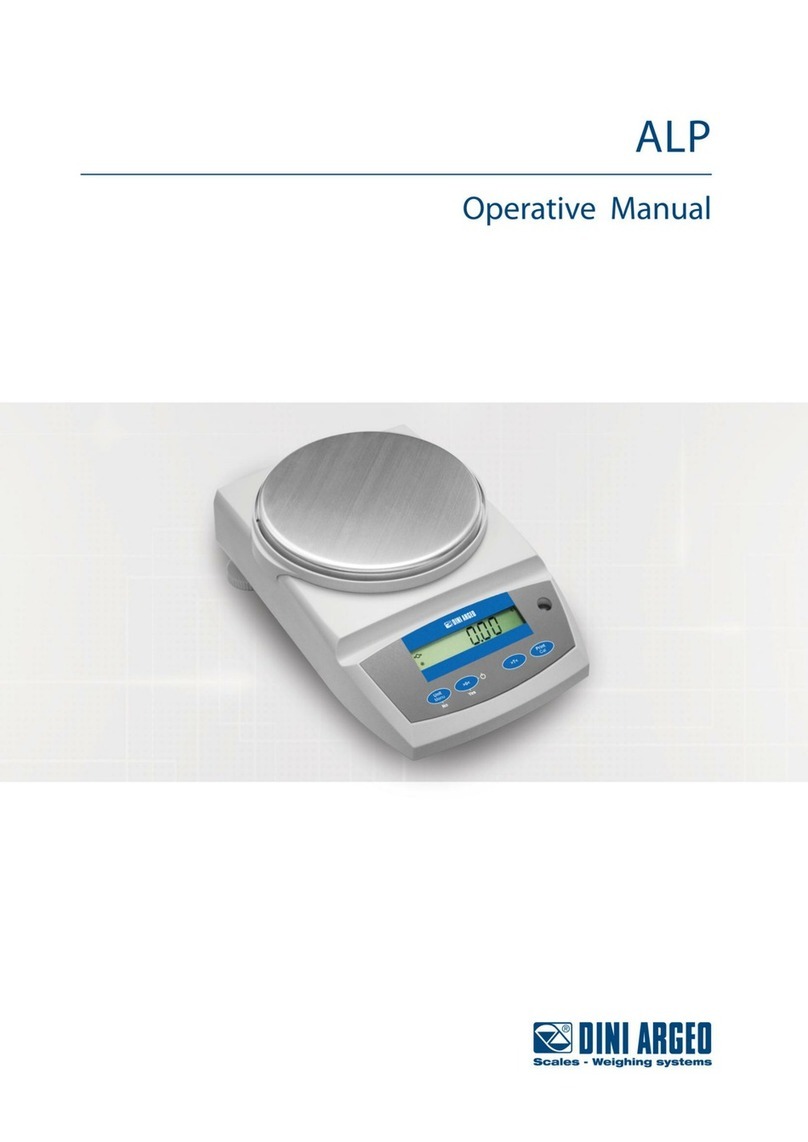
Dini Argeo
Dini Argeo ALP User manual

